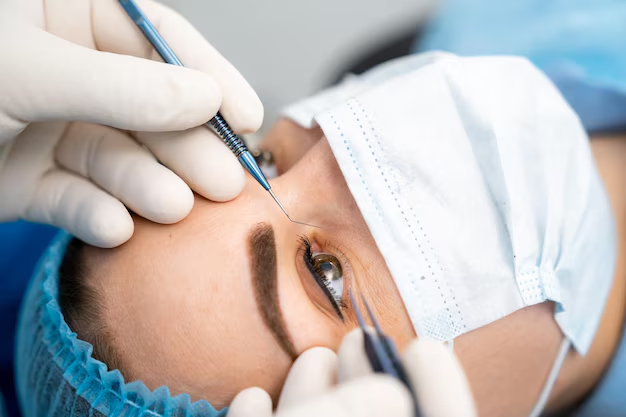Understanding the Recovery Time After Cataract Surgery: What to Expect
Cataract surgery is a common procedure that can significantly improve vision quality, allowing many to see the world with newfound clarity. However, after opting for the surgery, one of the most pressing questions is: what is the recovery time for cataract surgery? While the procedure itself is relatively quick, the recovery process can vary from person to person. Let’s explore the various aspects of cataract surgery recovery, including what to expect, how to care for your eyes post-surgery, and factors that might influence healing time.
What Happens During Cataract Surgery?
The Basics of Cataract Surgery
Cataract surgery involves the removal of the cloudy lens in your eye, which is then replaced with an artificial lens. This process typically lasts about 15 to 30 minutes and is performed on an outpatient basis. The surgery is generally safe and effective, with minimal discomfort.
Immediate Aftercare
Once the surgery is completed, you will spend a short time in recovery before being allowed to return home. It's crucial to have someone accompany you, as your vision may still be blurry from the procedure and the sedative effects.
Stages of Recovery: What to Anticipate
The First 24 Hours
- Blurry Vision: It's normal to experience blurred vision immediately after surgery. Your eye needs time to heal and adjust to the new lens.
- Mild Discomfort: Patients often report feeling slightly gritty or scratchy sensations in the eye. Over-the-counter pain relief can help manage this discomfort.
The First Week
- Initial Improvement: As the eye begins to heal, many notice a significant improvement in vision just within a few days. However, complete clarity may take a bit longer.
- Precautionary Measures: It’s important to follow any prescribed post-operative care, which may include eye drops to prevent infection and inflammation. Avoid rubbing your eyes, bending over, or lifting heavy objects.
Weeks Two to Four
- Gradual Stabilization: Vision continues to stabilize, and most patients can resume normal activities, including returning to work and driving, as guided by their doctor.
- Follow-Up Check-Ups: Regular follow-up appointments with your ophthalmologist are critical to ensure the eye is healing properly.
After One Month
- Complete Recovery: For most people, comprehensive healing occurs within a month. However, some may need a little longer for their vision to stabilize completely.
Factors Influencing Recovery Time
Age and Overall Health
- Age: Older individuals may experience a slightly longer recovery period.
- Health Conditions: Pre-existing conditions such as diabetes or other eye disorders can affect healing times.
Compliance with Aftercare
Your recovery is heavily dependent on adhering to aftercare instructions. This includes:
- Regular application of prescribed eye drops.
- Avoiding activities that might strain or put pressure on your eyes.
- Protecting your eyes from dust, wind, and physical impact.
Individualized Responses
Each patient responds differently to surgery, making recovery times vary. While many experience complete healing within a few weeks, others may take longer due to unique physiological responses.
Practical Tips for a Smooth Recovery 🛡️
- Follow Doctor’s Orders: The most crucial tip is to strictly adhere to your doctor's advice regarding medication and care routines.
- Use Protective Eyewear: Sunglasses or protective shields can prevent irritation from sunlight and environmental factors.
- Rest, Rest, Rest: Ensure you get ample rest, allowing your body to heal naturally.
- Stay Hydrated and Eat Well: Maintain a healthy diet to support your body’s overall healing process.
- Monitor Vision Changes: Keep track of any sudden changes in your vision and report them to your healthcare provider immediately.
Frequently Asked Questions About Cataract Surgery Recovery
Can I Drive After Cataract Surgery?
While some patients can return to driving within a couple of days, it's vital to heed your doctor's advice. Only return to driving when you feel confident and your vision is sufficiently clear.
Are There Any Risks Involved During Recovery?
Though rare, risks can include infection, bleeding, or significant swelling. Regular postoperative consultations help mitigate these risks through timely medical intervention.
Will I Need Glasses After Surgery?
Many patients find their vision improved enough to reduce reliance on glasses or contact lenses. However, you might still require them for specific tasks like reading or driving at night.
What If My Vision Doesn't Improve?
If you notice persistent issues with vision clarity despite following recommended recovery protocols, communicate with your ophthalmologist. They can assess whether further treatments are necessary.
A Practical Summary for Quick Reference 📋
- First 24 Hours: Rest and follow initial care instructions. Expect blurry vision.
- First Week: Attend follow-up appointments. Protect your eyes.
- Weeks Two to Four: Resume most daily activities with caution.
- One Month: Full recovery typically expected, but individual experiences may vary.
Concluding Insight
Cataract surgery can be life-changing, providing clearer vision and a better quality of life. Understanding the recovery timeline helps set realistic expectations and underscores the importance of following aftercare guidelines diligently. Remember that patience is key – your journey to clearer vision is as unique as you are. Keep open lines of communication with your healthcare provider and give yourself the best opportunity for a smooth, successful recovery.
